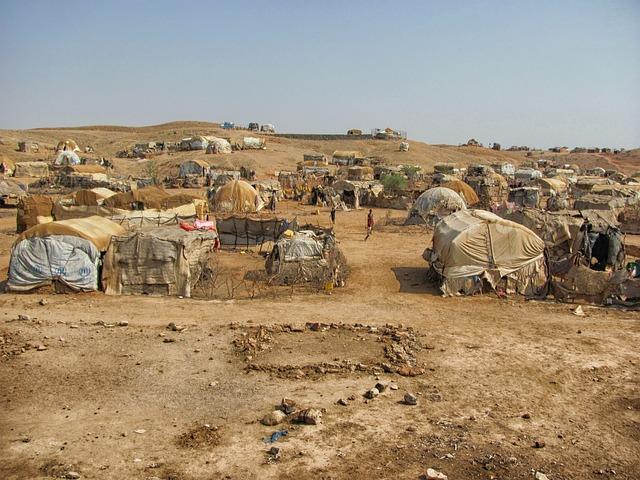Understanding the Historic Context of Gibraltars Put up-Struggle Displacement
The post-war interval was a time of essential upheaval for a lot of communities, and Gibraltar was no exception. Following World Struggle II,a collection of socio-political adjustments precipitated the displacement of a good portion of the inhabitants. This migration was influenced by a confluence of things, together with financial hardship, political reorientation, and the will for improved dwelling circumstances.Many Gibraltarians discovered themselves scattered throughout the globe, significantly in the UK, as they sought refuge from the uncertainties of their homeland. This displacement not solely reshaped the demographic panorama of Gibraltar but additionally left an indelible mark on its cultural heritage, because the bonds of neighborhood had been stretched skinny throughout 1000’s of miles.
Because the struggle ended and the actuality of repatriation loomed, a number of challenges emerged that complicated the journey again to Gibraltar. Amongst these hurdles had been the infrastructural harm left within the wake of the struggle, wich hampered efforts to supply housing and fundamental facilities for returning residents.Moreover, the transition from a wartime financial system to a peacetime one posed vital difficulties; many returning households confronted job shortage and insufficient healthcare providers. The native authorities,grappling with its personal monetary limitations,struggled to facilitate the reintegration of its former residents,resulting in social tensions and a way of dislocation amongst returning populations. The complexities of this repatriation course of illustrate the profound affect of historic occasions on native communities and their resilience within the face of adversity.
Evaluating the Infrastructural and Social Challenges confronted by Returnees
The return of displaced populations to Gibraltar following the struggle was marred by a myriad of infrastructural points that hindered their reintegration. Many returnees arrived to discover that their houses had been both broken or wholly destroyed in the course of the battle, creating an pressing want for housing options. The native authorities confronted logistical challenges in offering satisfactory shelter, as demand far outstripped out there provides. The rebuilding of houses was additional difficult by a lack of assets, resulting in prolonged intervals of short-term lodging, usually in insufficient circumstances. Key infrastructural parts, together with public providers, transport connections, and neighborhood amenities, had been additionally in dire want of restoration, leaving many returnees remoted and struggling to rebuild their lives in a acquainted but reworked environment.
past the bodily hurdles, there had been profound social challenges that formed the experiences of returnees. Many people confronted psychological misery stemming from the trauma of displacement, compounded by a sense of alienation in a neighborhood that had advanced of their absence. The necessity for psychological well being assist was vital,but usually missing,as native assets had been stretched skinny. Moreover, the combination of returnees into the workforce posed difficulties, as ability mismatches and social stigmas emerged.Components of neighborhood cohesion had been strained as returning households navigated a fancy panorama of relationships, main to tensions that hindered collective therapeutic and development. Addressing each the infrastructural and social challenges was important for the long-term success of repatriation and the restoration of a united Gibraltar.
The Position of Authorities Companies in Facilitating Resettlement Efforts

The complexities surrounding the repatriation of people displaced after vital conflicts have necessitated the involvement of assorted authorities companies. These entities play a vital position in coordinating efforts to facilitate the graceful transition of returning populations. Their obligations usually embody a wide range of vital duties, together with:
Offering Monetary Help: Direct funding and grants to assist resettlement initiatives.Coordinating Housing Options: Partnering with native authorities to guarantee satisfactory lodging for returnees.Well being and Wellbeing Help: Providing medical providers and psychological counseling for many who have skilled trauma.Employment Packages: Implementing job coaching and placement providers to assist reintegrate people into the workforce.
Furthermore, the institution of inter-agency collaboration is pivotal for addressing the multifaceted wants of returning populations. This collaboration can contain each native and nationwide companies working in tandem to create a unified strategy. Notably, the institution of a central job drive can strengthen these efforts by:
Streamlining Dialog: Making certain that each one companies are knowledgeable and up-to-date on present resettlement processes.Enhancing Useful resource Allocation: Successfully managing assets to keep away from duplication of efforts.Engagement with Non-Governmental Organizations: Collaborating with NGOs to leverage further assist and experience in the resettlement course of.

Suggestions for Future Resettlement Methods and Help methods

To boost the effectiveness of resettlement methods for displaced populations,it’s critical to undertake a multifaceted strategy that takes under consideration the various wants of people and households. Future efforts ought to prioritize neighborhood involvement within the planning and implementation processes,making certain that the voices of these affected are heard and valued. Efficient methods might embody:
Common Consultations: Set up boards the place displaced people can share their experiences and wishes.Collaborative Partnerships: work alongside native NGOs and worldwide organizations to pool assets and experience.Culturally Delicate Packages: Develop initiatives that respect and combine the cultural backgrounds of the repatriated populations.
Furthermore,it is crucial to construct strong assist methods that tackle each rapid and long-term challenges confronted by returning residents. In depth assist infrastructure ought to embody:
Social Companies Entry: Facilitate connections to well being care, training, and housing providers to ease the transition again to house life.Financial Alternatives: Create job coaching and employment applications that may assist people regain monetary stability.Psychological Well being Help: Incorporate psychological help to assist people cope with the trauma of displacement.assist SystemKey ComponentsSocial ServicesHealthcare, Training, housingEconomic OpportunitiesJob Coaching, Employment ProgramsMental Well being SupportCounseling, Help Teams
Classes Discovered: The Significance of Complete Planning in Repatriation Initiatives

The complexities surrounding repatriation initiatives, particularly within the context of Gibraltar’s post-war resettlement, underscore the necessity of meticulous planning. All through the resettlement course of, a number of key insights emerged concerning the significance of understanding neighborhood wants and historic context. Triumphant repatriation efforts are characterised by:
Thorough Assessments: Conducting surveys and interviews with displaced populations helped determine their priorities and considerations.Stakeholder Involvement: Together with native leaders and organizations ensures that initiatives are culturally related and supported by the neighborhood.Adaptive Methods: Being versatile and prepared to regulate plans in accordance to suggestions and unexpected challenges is important for achievement.
Furthermore, the collaboration between governmental companies and non-profit organizations performed a vital position in addressing the multifaceted wants of the returning inhabitants. The creation of a complete framework not solely facilitated logistical preparations however additionally emphasised the psychological points of resettlement—recognizing that emotional and social reintegration is as important as bodily relocation. A mannequin strategy for such initiatives consists of the following parts:
elementDescriptionCommunity EngagementFostering a participatory atmosphere for residents to voice their considerations and contribute to planning.Useful resource AllocationEnsuring satisfactory assets for housing, healthcare, and employment alternatives for returnees.Monitoring and EvaluationContinuously assessing the effectiveness of repatriation efforts to study from successes and setbacks.
to sum up
the repatriation of Gibraltar’s displaced inhabitants following the tumultuous post-war interval reveals not solely the complicated challenges confronted by authorities however additionally the resilience of the human spirit within the face of adversity. As explored on this article, the multifaceted points surrounding resettlement—ranging from logistical hurdles to the social integration of returnees—underscore the significance of a concerted and compassionate strategy to addressing the wants of these affected. by analyzing the previous, we glean invaluable classes that can inform current and future efforts in related contexts globally. As Gibraltar continues to evolve, understanding this vital chapter in its historical past not solely honors these who journeyed by it but additionally shapes a extra inclusive and supportive neighborhood shifting ahead.
Source link : https://europ.info/2025/03/25/gibraltar-2/declassified-gibraltars-post-war-resettlement-the-challenges-of-repatriating-a-displaced-population-gbc-news/
Writer : Caleb Wilson
Publish date : 2025-03-25 02:15:00
Copyright for syndicated content material belongs to the linked Source.


